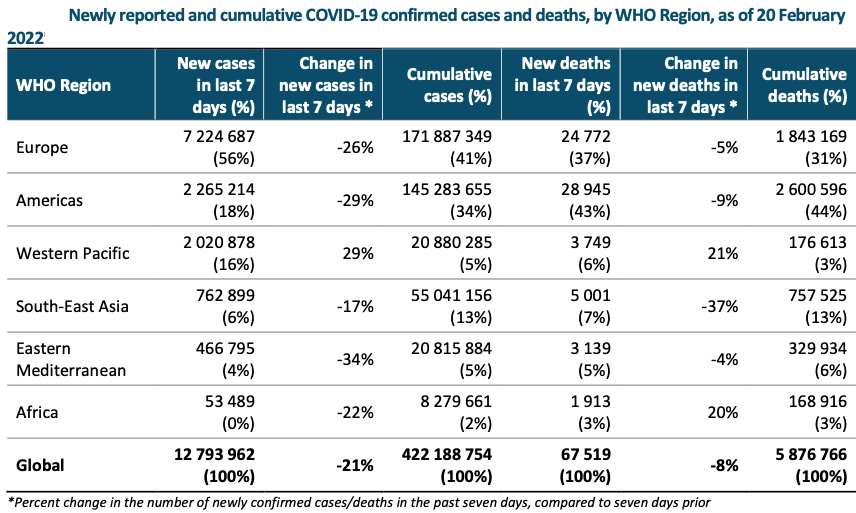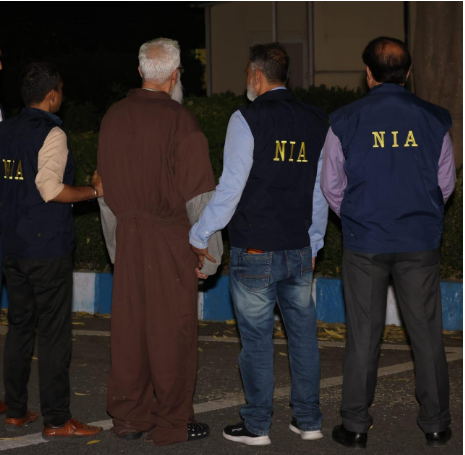
Geneva: The number of new COVID-19 cases decreased by 21% as compared to the previous week, globally, during the week of 14 through 20 February 2022. In addition, the number of new deaths showed a decreasing trend (-8%) when compared to the previous week, according to the latest the COVID-19 Weekly Epidemiological Update of the World Health Organization, released today.
At the regional level, WHO’s Western Pacific Region reported a 29% increase in the number of new weekly cases, while all other regions reported decreases: the Eastern Mediterranean Region (-34%), the Region of the Americas (-29%), the European Region (-26%), the African Region (-22%) and the South-East Asia Region (-17%). The number of new weekly deaths increased in the Western Pacific (+21%) and African (+20%) Regions and decreased in the South-East Asia Region (-37%), the Regions of Americas (-9%), the European Region (-5%) and the Eastern Mediterranean Region (-4%).
The highest numbers of new cases were reported from the Russian Federation (1 236 910 new cases; -7%), Germany (1 218 465 new cases; -8%), Brazil (773 353 new cases; -23%), the United States of America (746 129 new cases; -39%), and the Republic of Korea (612 195 new cases; +80%).
The highest number of new deaths were reported from the United States of America (14 723 new deaths; -6%), Brazil (5877 new deaths; -11%), the Russian Federation (5252 new deaths; +8%), India (3238 new deaths; -51%), and Mexico (2221 new deaths; +8%).

Since the first reporting of the Omicron variant in November 2021, almost 1.5 million sequences have been deposited in GISAID- a Global Initiative on Sharing Avian Influenza Data. By the first week of January 2022, Omicron accounted for 90% of submitted sequences; by week five, Omicron had largely replaced all other variants and now accounts for over 99% of submitted sequences. Amongst the major Omicron lineages, BA.1 predominates overall, followed by BA.1.1 and BA.2, with BA.3 being the least frequently detected.
Weekly trends show that the relative proportion of BA.2 has increased over time, becoming the second most frequently detected lineage after BA.1.1 by week 6, and the dominant lineage in 18 countries. This trend is most pronounced in WHO’s South-East Asia region, followed by the Eastern Mediterranean, African, Western Pacific and European Regions.
In contrast, very little BA.2 has been detected in the Americas, and no growth has been observed for the BA.3 lineage.
Increased sequence variation has been observed within the BA.1 and BA.2 lineages over time, in line with the increasing transmission. The weekly number of Omicron sequences has been steadily decreasing since the beginning of 2022. This trend should be interpreted with some caution, as data for the most recent weeks may be incomplete due to the delay between specimen collection and submission of sequences to GISAID (median delay from week 1 of 2022: 13 days), WHO said.
– global bihari bureau







